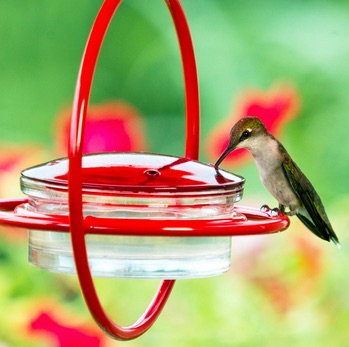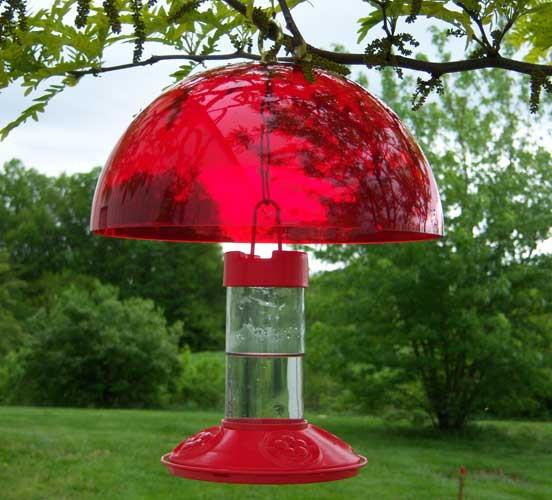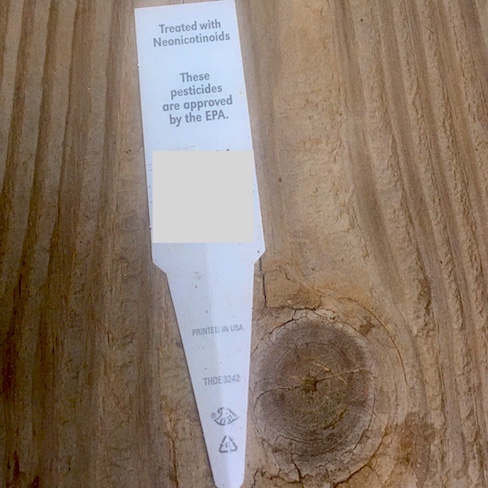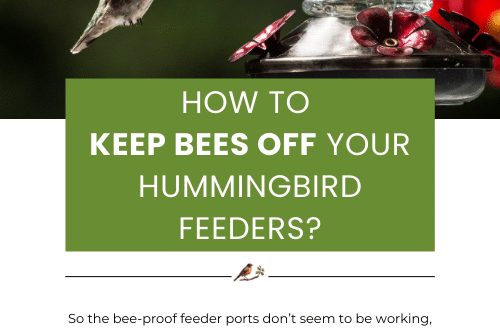-
Hummingbird Feeder Hacks for Ants, Wasps and More
From ants and wasps to leaky feeders and wasted nectar… what’s one to do in order to avoid these common hummingbird feeder pitfalls?
Once again we went from Mother’s Day to Father’s Day without posting. Instead of celebrating Dad this year, Happy Father’s Day to All, we’d rather offer some useful hacks pertaining to common problems with hummingbird feeders. By the way, they do make swell gifts for dads who dig birds!
Wasps and Yellow Jackets: Hummingbirds despise them and the secret is in the ports! Since sugar water has no aroma, it’s the feeder itself which may be attracting them, namely the sticky nectar near feeder ports. Keep your hummingbird feeder from swaying because the motion allows nectar to accumulate on the outside of the feeder. This is just one reason we prefer glass hummingbird feeders- for the weight. You can also take the feeder down for a few days until pests dissipate and hang in new location.
Not all plastic feeders are crated equal. Dr. JB’s feeder for example has years of research and testing behind the bee-proof feeder! Specially designed ports actually prevent seeping nectar and bees. It’s received wonderful reviews over the years as well, although after 11 years we’ve just recently started collecting and publishing reviews. Duh! Offered with the red hummer helmet, sprites will surely find this easy to clean hummingbird feeder in no time flat!
The jury’s still out with this hack for wasps around your hummingbird feeder (about 50/50 according to hummingbird groups on social media). A brown crumpled paper bag hung near the feeder may deter wasps. Resembling a hive, wasps will steer clear if not their own digs. Fake or imitation hives are available for purchase online as well.
Ants: They’ll ruin a brand new refill of fresh nectar in seconds. Secreting something that must taste really awful, hummingbirds simp
ly will not drink nectar with even one ant floating inside!
This fix is really simple… use an ant moat with your hummingbird feeder! Some moats use chemicals on the underside, we prefer those using water. Smaller birds may even be spotted drinking from ant moats filled with fresh water. An inexpensive, one-time purchase will spare your nectar and the headache of ants in your feeder simply because ants can’t swim!
Wasted Nectar: Don’t fill your your feeder to the top! Hummingbirds’ tongues are extremely long, wrapping around their skull when fully retracted. Aside from their long beaks, tongues are 1.5 times the length, allowing them to lap nectar from deep within flowers. Nature equipped the sprites accordingly!
In addition, make your own nectar because it really is simple! Once you do for the first time, you’ll scratch your head ask yourself “why didn’t I do this before?”. Now if you ask 3 people- you may get 3 different answers, but the ratio is always 1:4 and cane (not beet) sugar is preferred.
Here’s our take:
1 Cup plain table sugar to 4 Cups water… that’s it and NOTHING ELSE, ever!No need to boil water, though boiling 1 cup dissolves sugar quickly and effectively. Add 3 Cups of cold water and there’s no cooling time. Store remainder in fridge for up to two weeks. During extreme heat, nectar must be changed every 1 to 2 days as sugar ferments quickly. Should this commitment become a pain or too time consuming, it’s best to take your hummingbird feeder down and concentrate on nectar-producing flowers to feed hummingbirds naturally. Leaving a feeder with old nectar is definitely wasteful as sprites will avoid nasty food. Aside from flowers, leaf misters, solar bubblers, drippers or any feature providing moving water will entice birds, especially during the long and hot dog days of summer… here in Atlanta anyway!
Leaky Feeders: Try a top-fill feeder sans any base. Parasol’s glass hummingbird feeders in blossom, bloom or bouquet styles will not leak or drip… ever! There’s no seams or attachments for nectar to seep through. Aside from being beautiful garden art, they’re handmade in Mexico from recycled glass.
If using the tube style hummingbird feeders and dripping nectar is a problem, move the feeder to shade. Rubber stoppers may contract and expand in heat/full sun. These feeders also work on a vacuum principle, meaning there can be no air inside the vessel. Try filling the feeder completely (in the sink with plain water) to see if this alleviates dripping. You can also opt for replacing the tube itself. Some tubes contain a tiny steel ball-bearing which helps stop leaking.
Flowers: Always plant native for best results to offer birds food and shelter, it’s a win-win situation. Checkout Audubon’s Plant Database for recommendations on your locale, just enter your zip code and the list returns shrubs, trees, vines and the best nectar producing flowers for your area.
When purchasing from big box garden centers, you may want to steer clear of this tag. We’ve removed the store name as a social media post was recently censored (bummer).
The buzz around town is this chemical is harmful to bees- so one must ponder if it’s not equally harmful to all pollinators as well?
Since butterflies, bats, bees and hummingbirds all feed from the same flowers… we’ll let you be the judge.
We hope at least one of the above hummingbird feeder tips might be helpful. Whether you’re novice or advanced back yard birding fanatic… happy summer and birding 🙂

 From ants and wasps to leaky feeders and wasted nectar… what’s one to do in order to avoid these common hummingbird feeder pitfalls?
From ants and wasps to leaky feeders and wasted nectar… what’s one to do in order to avoid these common hummingbird feeder pitfalls?
 ly will not drink nectar with even one ant floating inside!
ly will not drink nectar with even one ant floating inside!
 When purchasing from big box garden centers, you may want to steer clear of this tag. We’ve removed the store name as a social media post was recently censored (bummer).
When purchasing from big box garden centers, you may want to steer clear of this tag. We’ve removed the store name as a social media post was recently censored (bummer).